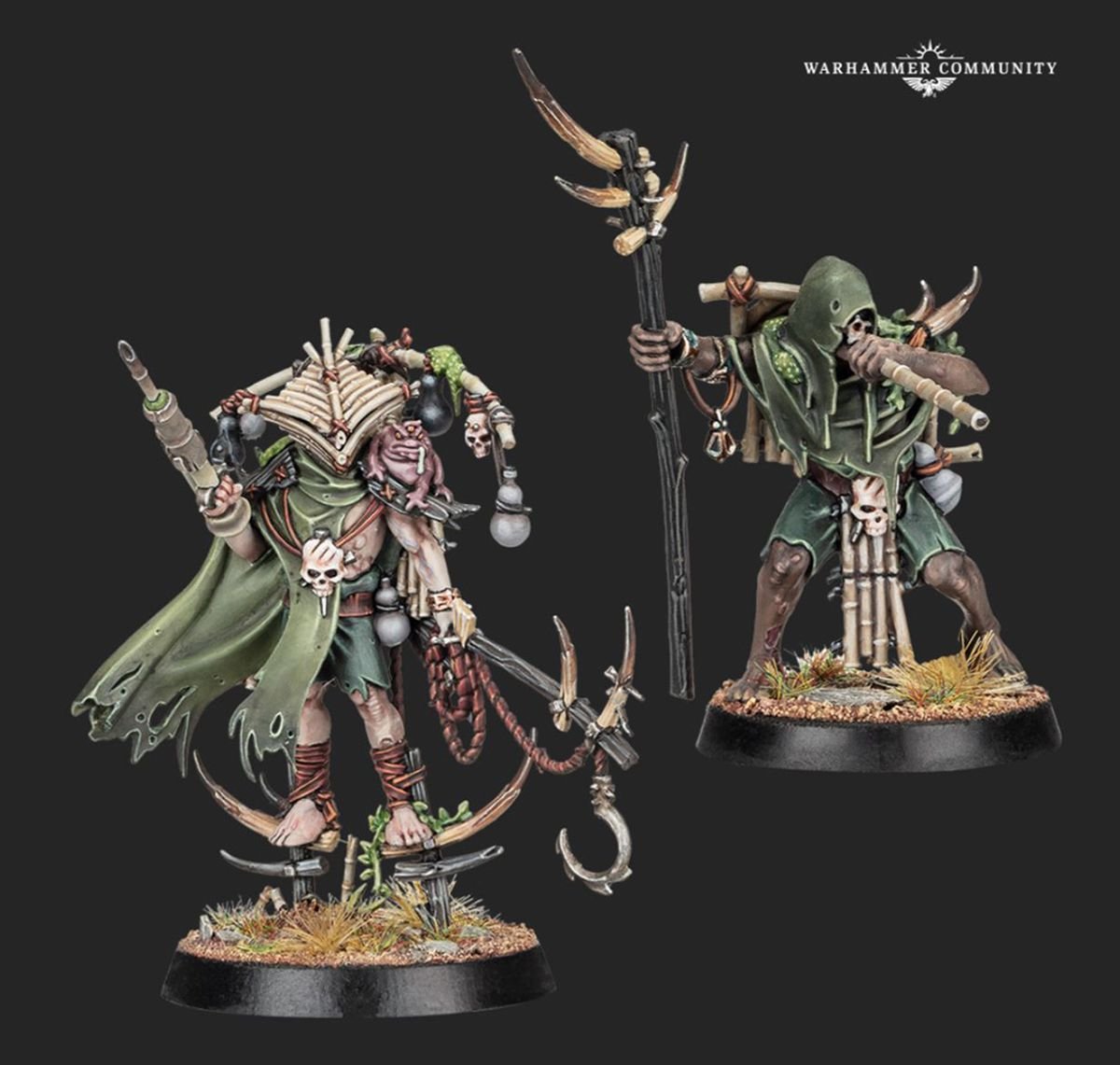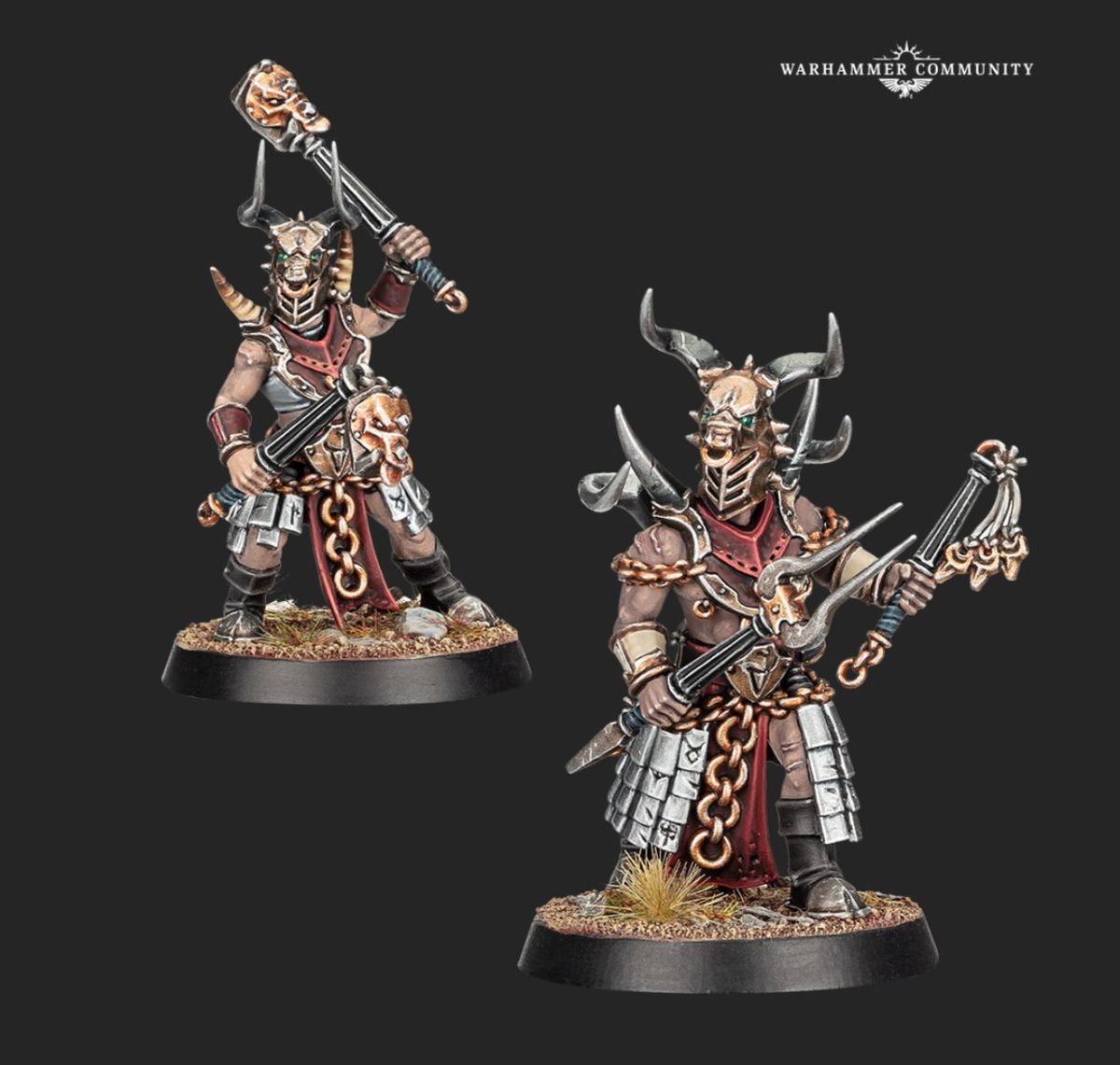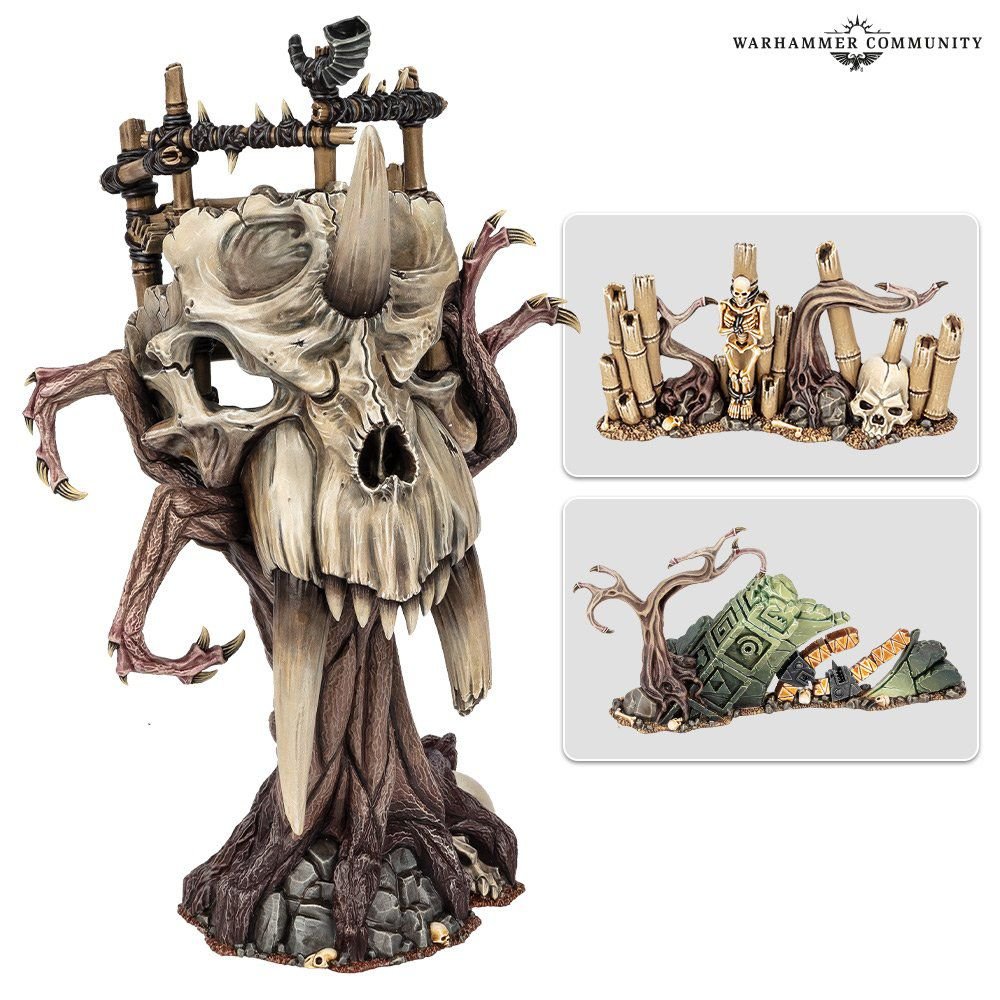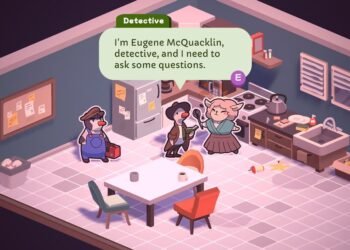Warcry came as a big surprise when Games Workshop announced it in 2019. But after the release of Warhammer 40,000: Kill Team, the community was primed for another miniature skirmish game, this time set in the fantasy world of Warhammer: Age of Sigmar. The appeal was similar — a meaty game that only requires a handful of miniatures to play, and a system with the potential for strong narrative campaigns and a bustling competitive scene. The result was a hit with both fans and critics alike. Warcry: Heart of Ghur is the second Warcry box set, released to retail in August, and it marks a simple yet effective revision of what was already Games Workshop’s best ruleset.
Heart of Ghur is set in the Gnarlwood, a rugged swampland twisted and possessed by the bleeding life force of an extraterrestrial ship. Its treasures lay nestled in the wicked environs, protected by malevolent beasts, carnivorous trees, and other warbands thirsting for blood and fortune.
The box includes a thick board to battle on, enough terrain to fill the area, and two complete warbands for head-to-head play. The Rotmire Creed are a psychotic group of plague alchemists who are committed to defending their territory from the aggressive Horns of Hashut, a rabid band of despoilers intent on scorching the land and laying waste to everything they encounter. While these two factions of heinous Chaos-worshippers are featured in this release’s main storyline, other warbands from across Games Workshop’s product line can also enter Gnarlwood in search of alien artifacts.
The distinct setting is a large part of the allure with Heart of Ghur. One of the strongest features of Games Workshop’s skirmish titles — Kill Team, Necromunda, and even Blood Bowl to some extent — is the ability to create smaller warbands of just a handful of figures from your favorite army. The cost of a full-fat Age of Sigmar army can reach several hundred dollars at a minimum, but in Warcry you could build four or five different warbands for around the same price. Virtually anything and everything from the Age of Sigmar product line is up for grabs here, with all of the stats and rules available for free online.


What elevates Warcry above its competitors, however, is its magnificent flow and pace of play. It’s a very energetic game, as scenarios and terrain layout are generated randomly. Several decks are shuffled and cards revealed to dictate battlefield setup and objectives. Each procedurally created encounter also boasts a twist, which provides for an unexpected rules alteration and strategic wrinkle. Twists are one of the most interesting aspects of Warcry. Some result in general enhancements to all participants, such as fighters receiving an additional point of toughness, while others alter standard movement or combat rules. This nudges the tactical considerations in a way which causes players to alter their strategy and adapt to an evolving situation.
Play is similarly dynamic, as each round players roll fistfuls of dice and separate their results into pools of single, double, and triple values. While the participant with the largest amount of singles gains initiative for the round, the doubles and triples are spent for faction-specific abilities. This provides a large degree of asymmetry in addition to the fighter profiles, allowing for unexpected combat boosts or aggressive maneuvers. I greatly prefer the system to Kill Team’s, which require a lot more study. In Warcry you simply have a small chart that’s easy to reference and internalize.
Activation is by individual model, with players alternating back and forth. The tactical considerations are tremendous in spite of the very simple activation and combat systems. Texture is provided by interactive terrain, objective-based play, and a battlefield that has warriors exiting and entering over the course of battle.

Warcry is also a highly vertical game, in that your troops can climb structures and leap across gaps. This supports the cinematic feel of the fast-paced conflict. It also rewards creative terrain modeling.
At its core, Heart of Ghur is nearly identical to the preexisting Warcry ruleset. But it does move the game forward in two key areas.
The most noteworthy is a new reaction mechanism. This allows fighters to trigger unique interrupts with those double and triple power dice. It’s an elegant system that evokes the overwatch mechanic common to many science fiction-themed miniatures games. Players may be able to react to an opponent’s charge by attacking them first, or fire off a ranged attack when someone moves into their line of sight. Each faction has their own unique reaction informed by the setting and their particular fighting style. It’s a wonderful addition to the game as it enhances the dynamism and flow of conflict, perfectly integrating into the alternating activation structure. It’s surprisingly smooth and feels as though it always belonged.
Heart of Ghur also beefs up campaign play. The system now more closely mimics the Path to Glory campaign system in Age of Sigmar. Warband story objectives are integrated into existing scenarios as an additional consideration, allowing players to progress on their individual narrative path and attain quest points. Eventually the quest is completed, offering rewards such enhanced fighters or a powerful artifact to wield. The beauty here is that this is an additional layer to the game that sits atop the simple skirmish structure and provides a more rich and satisfying experience.
Warcry’s new territory management system is similarly fantastic. You can send warriors from your force out to explore and seek fortune, risking their health. This has shades of the turf system in Necromunda, and feels like a more mature and dramatic inclusion that helps flesh out the Gnarlwood setting.
Overall, much of what’s been presented in this box is simply fantastic. The system has not been tinkered with too much, retaining the core spirit of what made Warcry special. Yet it’s been noticeably improved in an elegant and refined fashion.
From a cost perspective, the value of this set is sufficient; in isolation, perhaps even strong. It is, however, difficult to ignore how fantastic the original Warcry core box was. While the warbands here are just as intriguing as the previous group, the initial terrain set was one of the best contained sets of scenery Games Workshop has ever released, so it’s difficult for Heart of Ghur to measure up. The Gnarlwood is still an outstanding environment to spill blood in, and it comes to life admirably with spiteful trees and gleaning skulls.
Heart of Ghur also serves as an introduction to the Gnarlwood, an environment that will continue to be explored with additional box sets and terrain in this new season of Warcry. This setting is significant and stretches beyond the confines of this skirmish game. Both Age of Sigmar and Warhammer Underworlds are releasing titles in this locale, as the theme will touch all of Games Workshop’s fantasy products.
This is a wonderful beginning to Warcry’s second age. My imagination and passion are primed for the supplements to come and for Games Workshop’s best game to continue its reign.
Warcry: Heart of Ghur was reviewed using a retail copy provided by Games Workshop. Vox Media has affiliate partnerships. These do not influence editorial content, though Vox Media may earn commissions for products purchased via affiliate links. You can find additional information about Polygon’s ethics policy here.

















































